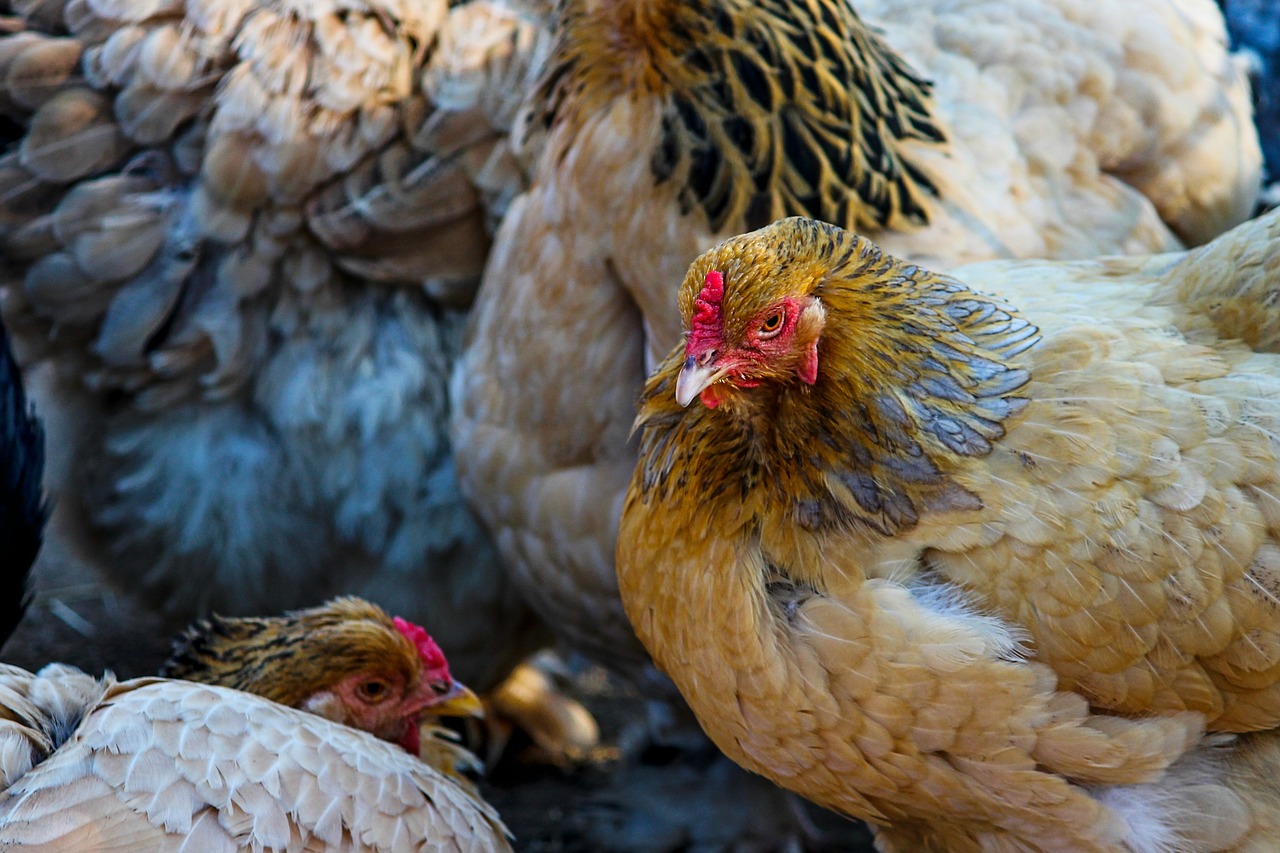Thinking about raising meat chickens on your small farm?
If so, you’ve made a great choice!
Conventional poultry that is raised in a factory-farm setting is often loaded with additives and raised in an inhumane way.
Raising your own meat chickens allows you to gain full control of every step of the process. It’s also incredibly enjoyable!
From carrying out your daily chores to sitting down and savoring that first bite of meat, there’s so much to appreciate about the lost art of raising meat birds.
However, if you’re just getting started, you might find yourself intimidated by the sheer volume of decisions you must make.
- What kind of coop do I need?
- How do I fatten my meat birds?
- Which breeds of chickens are best to raise for meat?
Here are fifteen of the best meat chickens you can raise – along with insider tips on how to raise meat birds in the most productive, beneficial ways.
The 15 Best Meat Chickens
When you are preparing to select the perfect breed of meat chicken for your farm, you will likely have several questions.
The most important details to pay attention to when you are researching your breeds is the approximate weight and the processing time of your chosen chicken breed.
You should also pay attention to other factors that may be important to you, such as whether the breed can lay eggs or if it withstands certain weather conditions better than others.
Some chicken farmers will also advocate for raising heritage breeds.
Heritage breeds are defined by the American Poultry Association. These birds are generally slow growing but have long, productive outdoor life spans.
They are also naturally mating (no hybrids allowed). While heritage breeds offer many benefits, they can also be more expensive to raise, so you’ll need to consider whether this is a factor that matters to you.
Ready to get started?
Here is our list of the fifteen best meat chickens you can raise.
1. Cornish Cross
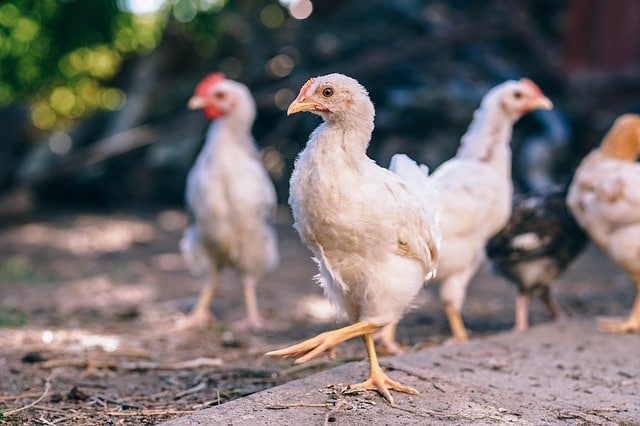
- Approximate Weight: 12 lbs
- Processing Time: 4-6 weeks
Cornish Cross chickens are some of the most popular meat birds you can raise, largely because they are bred for commercial meat production.
These birds grow rapidly, reaching about twelve pounds in just six weeks. They have great-tasting meat with large thighs, legs, and breasts. They also produce a nice fat cap that provides for a fantastic roast.
Cornish Cross birds are known in particular for having a ton of breast meat. They don’t have a lot of muscle, either. This is the type of chicken you are probably eating when you buy your meat at the grocery store.
Unfortunately, Cornish Cross birds eat a lot in order to keep up with their rapid growth – up to fifty pounds every few days in an average-sized flock.
They also need to butchered right at the age of maturity or they will grow so large that they can suffer from health problems like broken legs or heart malfunctions. Cornish Cross chickens will not go broody and you can’t really breed them using an incubator, either, meaning you will have to purchase chicks every year.
2. Jersey Giant

- Approximate Weight: 13 lbs
- Processing Time: 16-21 weeks
The Jersey Giant is another popular commercial breed, bred originally in the United States as a potential replacement for the turkey.
These birds are purebred, meaning you can successfully breed them on your farm, and while they grow at a relatively slow pace, they produce quite a lot of meat.
These chickens aren’t raised as often in the commercial world as are Cornish Crosses, mostly because they have a very slow feed conversion rate – although they will end up growing larger, it will take them much more time to do so.
That said, Jersey Giant’s aren’t prone to nearly as many health issues as are Cornish Cross chickens, and they also lay eggs. This gives you something to look forward to in addition to meat.
3. Freedom Rangers
- Approximate Weight: 6 lbs
- Processing Time: 9-11 weeks
If the name is not enough to convince you that the Freedom Ranger is one of the coolest meat birds to raise, these statistics will – this bird is ready for slaughter in as little as nine weeks.
Also known as the Red Ranger, this bird has yellow fat and skin and lays brown eggs if you want to keep some birds around in the future.
Freedom Rangers are a favorite for organic farmers, bred specifically for the pesticide-free meat market and designed to be raised on pasture.
They can be fed low-protein feeds and are much better at fending for themselves than are Cornish Crosses. They can easily survive off bugs and grass and produce great tasting meat.
Unfortunately, while they produce great tasting meat, they don’t produce quite as much of it. They are easier to raise but have a smaller growth pattern, with the roosters only reaching about six lbs on average.
4. Bresse
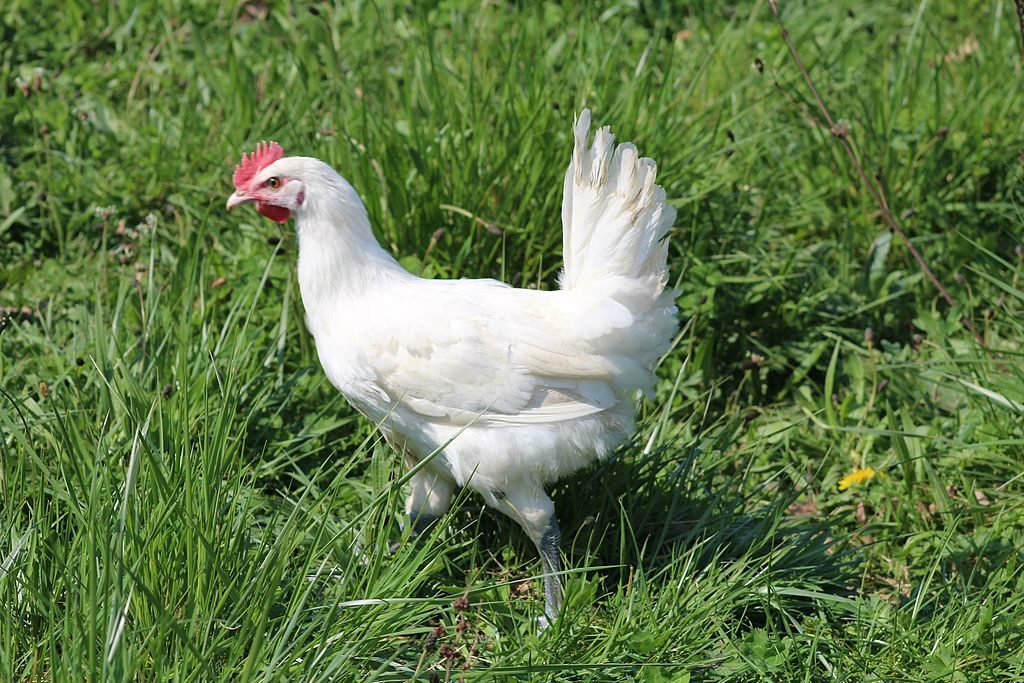
- Approximate Weight: 7 lbs
- Processing Time: 16-20 weeks
Bresse chickens are attractive white birds that are also known for meat production. With bright blue feet, these birds run on the more expensive side. However, because you can successfully hatch the eggs of this chicken species, you can rapidly recoup those expenses over the years.
Some chicken keepers and culinary experts will argue that the Bresse meat bird is the most delicious tasting chicken in the world, offering superior texture and flavor. These birds are also easy to raise, offering a docile personality and a peaceful overall demeanor. You can find this chicken in shades of white, gray, and black.
5. Orpington
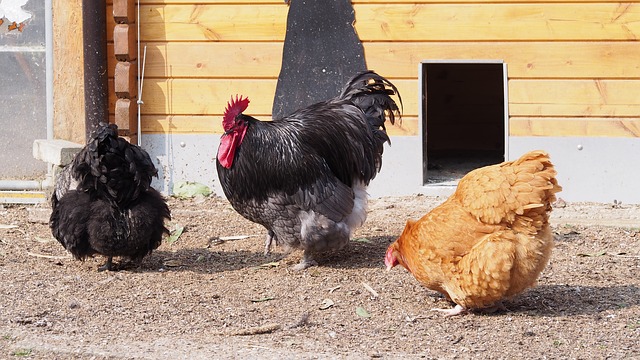
- Approximate Weight: 10 lbs
- Processing Time: 18-24 weeks
Another popular chicken breed is the Orpington. A heavy breed, males of this breed can grow as large as ten pounds. Orpingtons are dual-purpose birds, meaning they can be raised for meat as well as for eggs. While they grow at a slightly slower rate, they are excellent layers, producing up to 200 eggs per year.
Orpingtons are docile meat birds and can be found in several shades. You can find Oprgintons in black, white, blue, or buff shades. A heritage chicken breed, many people enjoy raising Orpingtons out of tradition alone. These birds also do quite well when allowed to forage, and they don’t need to be fed ridiculously high-protein feeds.
6. Buckeye
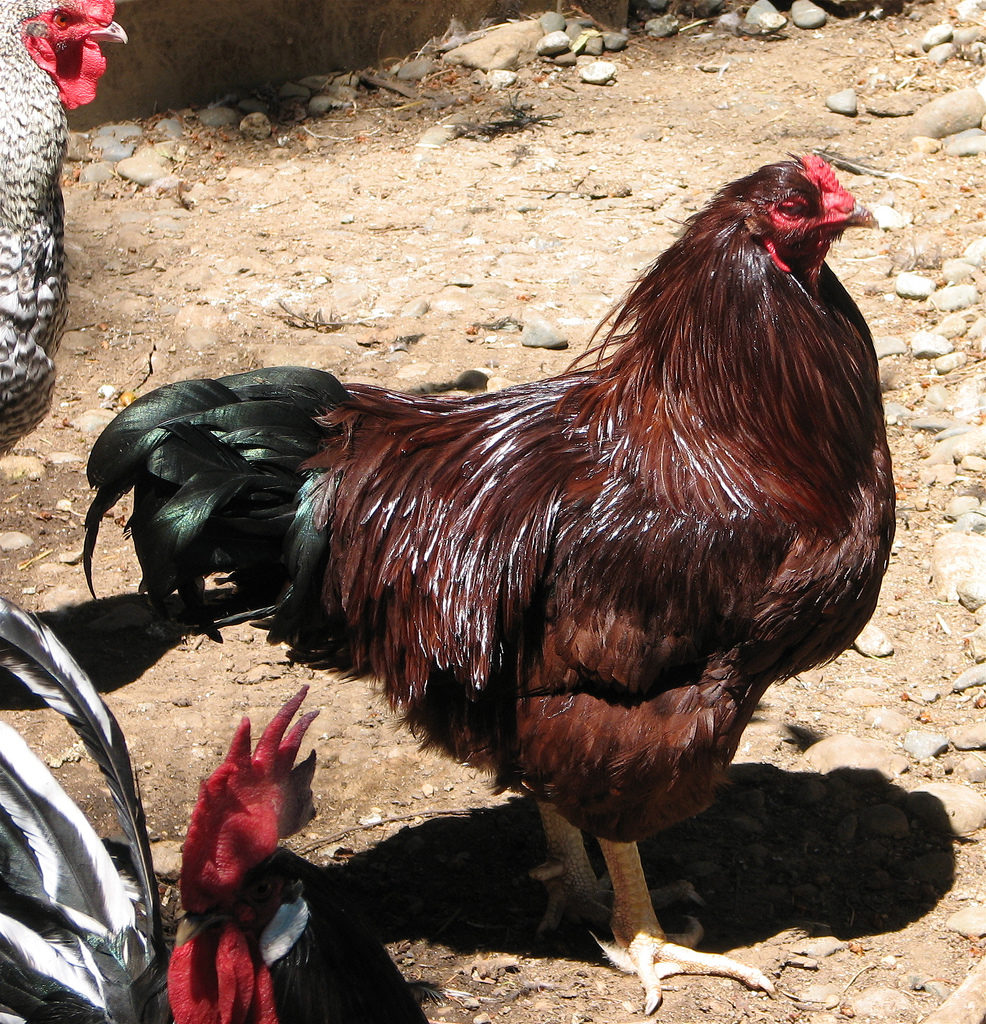
- Approximate Weight: 9 lbs
- Processing Time: 16-21 weeks
Buckeye chickens are designed for cold weather and can withstand just about any kind of swing in temperature. They are resistant to disease and are ideal for people who live in northern climates. They have a consistent breeding pattern and while they can be somewhat aggressive toward other animals, they are a fantastic dual purpose breed.
Buckeyes lay around 200 eggs per year, and are ready for butchering at about 16 weeks of age. Sporting a luxurious mahogany body of feathers, this breed is one you’ve got to consider if you’re in the market for a productive dual-purpose chicken that produces lots of tasty meat.
7. Brown Leghorn
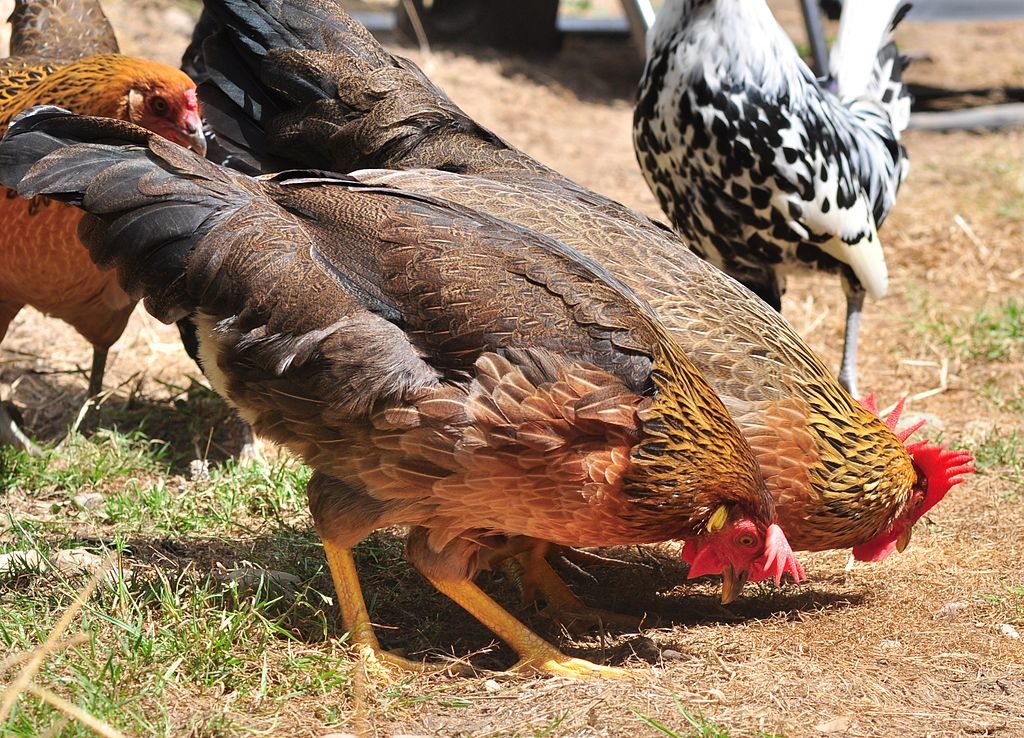
- Approximate Weight: 6 lbs
- Processing Time: 16-21 weeks
The Brown Leghorn is simply a variant of the White Leghorn, one of the premier egg-laying chickens you may have heard about. This breed can lay up to 280 eggs per year, but it also makes a decent meat bird.
Bred specifically for thriving in hot climates, the Brown Leghorn likes to forage and rarely exhibits aggressive behavior. While it won’t grow to massive sizes, its ability to produce both meat and eggs – and to survive harsh conditions – makes it a great choice for a backyard meat bird flock.
8. Egyptian Fayoumi
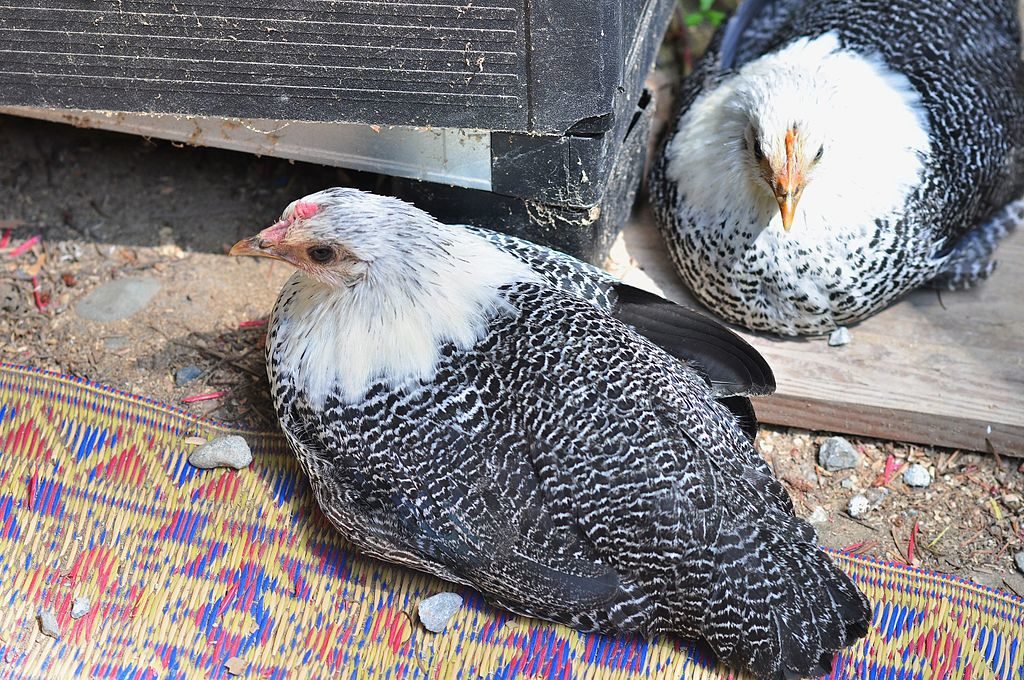
- Approximate Weight: 5 lbs
- Processing Time: 14-18 weeks
If you are looking for a more exotic breed of meat chicken, consider raising the Egyptian Fayoumi. This dual-purpose chicken lays about 150 eggs per year and is also a rapidly growing meat bird.
While it is on the smaller side of things, with roosters reaching only about five pounds, these birds mature quickly when it comes to laying. You’ll probably have eggs by the time your chickens are ready for slaughter!
Both the eggs and meat of this silver-colored bird are delicious, but they can be a bit flighty. Active foragers, Egyptian Fayoumis are rarely aggressive and are also resistant to most diseases.
9. Turken

- Approximate Weight:
- Processing Time:
We won’t sugarcoat things here – the Turken is definitely not the most attractive chicken you can raise. A common misconception is that Turkens are half chicken and half turkey. While this is not the case, it is true that Turkens look like the result of a failed experiment in breeding the two species.
These birds are also known as Naked Necks, so as you might suspect, these birds have no feathers around their necks. They are great backyard chickens and can be found at several colors, including blue, white, black, gray, and buff.
This breed does well in both cold and hot climates. You can keep them no matter where you lie, as they are extremely adaptable to any changes. Since they are so stress-resistant, they put on weight quickly. As active layers, you can expect about a hundred eggs per year from these birds. If you want to hatch your own eggs, it’s also important to note that these birds are great mothers.
10. Chantecler
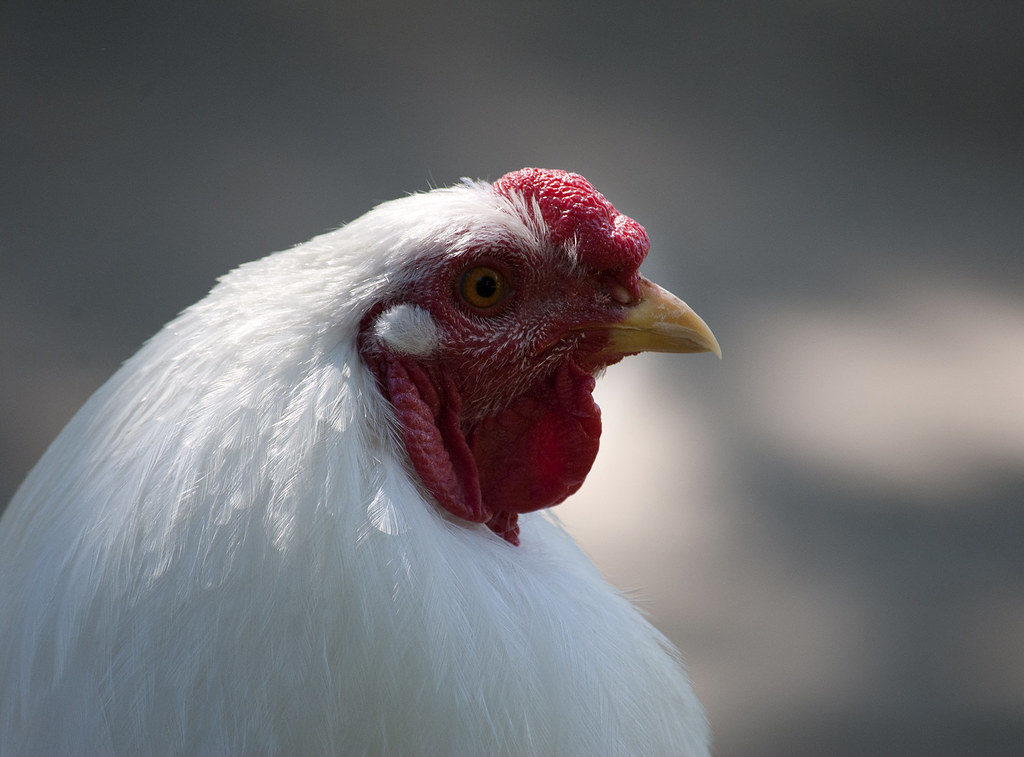
- Approximate Weight: 9 lbs
- Processing Time: 11-16 weeks
The Chantecler breed is another meat chicken that does well in cold climates. A fantastic dual purpose bird, this chicken lays eggs earliest and also matures to slaughtering age quite rapidly. These birds are suitable for free ranging, preferring to forage in addition to consuming a high-protein feed supplement.
Chanteclers can lay up to 200 eggs per year. Because they are a pure breed, they are less expensive to raise in the long run. You can easily breed multiple generations of this breed without seeing a loss in production or heritage.
11. Delaware

- Approximate Weight: 8.5 lbs
- Processing Time: 12 weeks
Delaware chickens are bulky dual purpose chicken breeds, raised specifically for producing a respectable amount of meat while also laying up to 280 eggs each year.
This cross-breed was developed from the Barred Plymouth Rock and the New Hampshire Red, largely to preserve the egg-laying ability and improved meat quality of the two individual breeds. This breed grows relatively quickly, reaching nearly nine pounds in just 12 weeks.
12. Croad Langshan
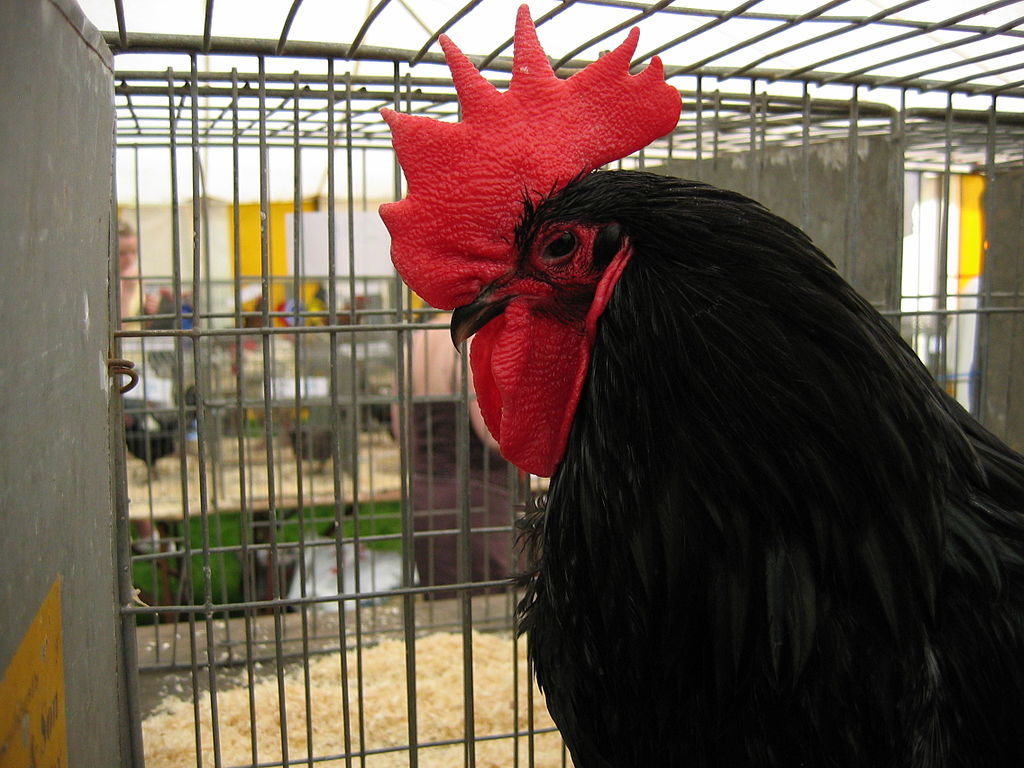
- Approximate Weight: 9 lbs
- Processing Time: 14-18 weeks
This unique, somewhat bizarre looking bird has soft black feathers and a bizarre green lining. This chicken originated in China and has feathered legs. While it can lay up to 150 eggs per year, it is just as commonly reared for its meat production abilities.
This chicken can be found in several colors, including blue and black. Males grow up to nine lbs while females are slightly smaller. These birds grow quickly and are one of the most intelligent and quiet chicken breeds you can raise.
13. Dorking

- Approximate Weight: 9 lbs
- Processing Time: 16 weeks
Dorking chickens are named after the English town of Dorking and mare best known for their tender, fine-textured white meat. These birds are also frequently raised for eggs, producing up to 140 large white eggs each year. They are calm and adapt easily to most settings, preferring to forage to find their food.
These chickens are not aggressive, but they should not be kept with aggressive chickens as they aren’t great at defending themselves. Because they can be prone to frostbite, they aren’t the best chicken breed to raise in northern climates. Hens can be slow to mature and usually don’t start laying until 26 weeks of age.
14. Kosher King
- Approximate Weight: 5 lbs
- Processing Time: 12 weeks
Kosher Kings are decent meat chickens with a gorgeous appearance. These birds have black and white striped plumage and are similar in appearance to the popular Barred Rock. Roosters of this breed tend to grow much more quickly than the females, but the females are decent layers if you keep them to maturity.
Originating from heritage breeds, these birds can be a bit more difficult to find at hatcheries but they mature more quickly than most heritage breeds.
15. New Hampshire Red
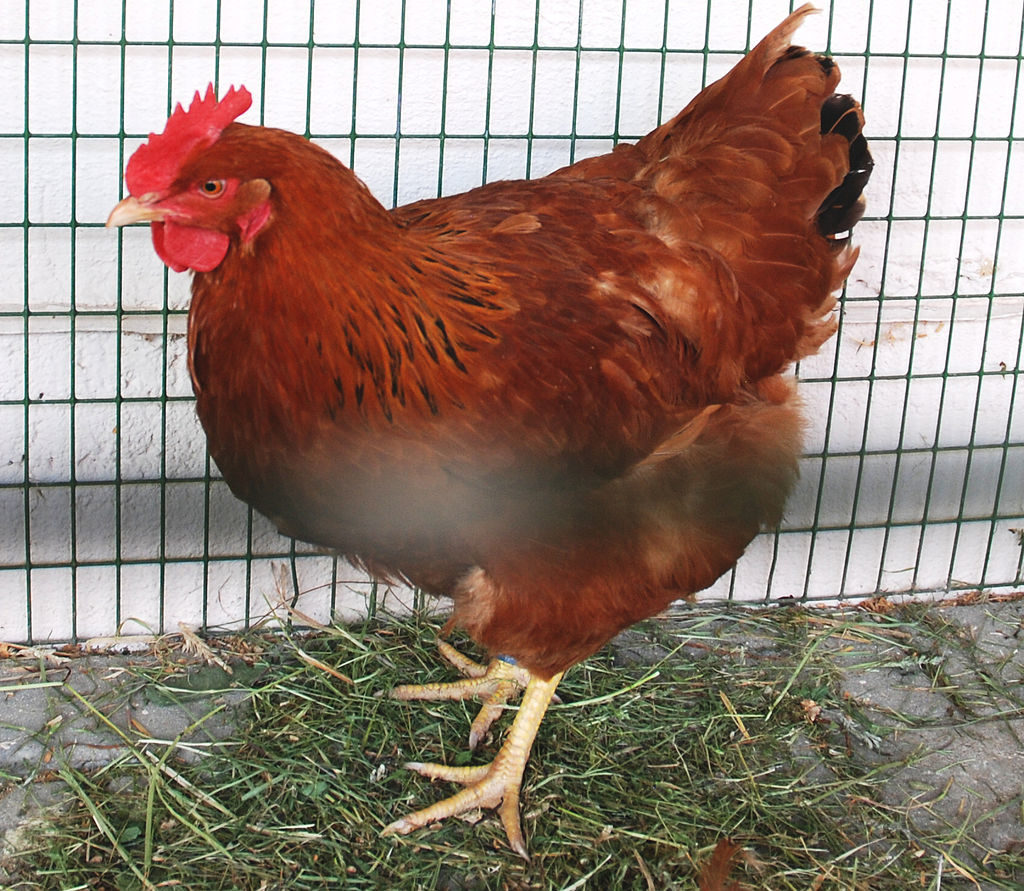
- Approximate Weight: 8.5 lbs
- Processing Time: 8-10 weeks
A classic American dual-purpose breed, the New Hampshire Red is yet another chicken that produces prolific quantities of eggs as well as tasty meat. This bird matures relatively quickly and is often used as a broiler species.
There are both standard and bantam varieties of New Hampshire Red chickens, with both producing exceptional products for backyard chicken farmers. These chickens tolerate challenging weather conditions and are known to be both broody and quiet. While males can be a bit aggressive, the adaptability and productivity of this chicken breed can’t be overlooked.
Raising Meat Birds from Day Old Chicks
There aren’t too many differences involved in raising meat birds as day-old chicks versus raising egg layers at this stage.
You will likely purchase your chicks from a hatchery or feed store.
Purchasing chicks is much easier when you are raising meat birds, as you don’t need to worry about whether you’ve received young hens or roosters.
Because you will butcher most breeds of meat birds before they reach sexual maturity, the sex of your chickens is not a factor.
Therefore, you can often purchase meat chicks at a much lower price than you can purchase egg layers – they do not need to be sexed before they are shipped to you.
Housing Your Meat Birds
The coop for your meat birds will be virtually identical to the one you might already have for your laying hens if you already raise chickens.
However, what you need to keep in mind is that you will probably be raising a higher volume of meat chickens than egg layers, so your coop size will need to increase dramatically.
In some cases, you might find that you need to raise 50, 100, or even 200 chickens in a season to meet the needs of your family.
One of the benefits of raising meat chickens, however, is that you don’t need to keep these birds for an entire year – in fact, in most cases, this is discouraged.
Therefore, you don’t need an insulated coop with protection from cold weather. You just need a temporary shelter.
Many people build hoop houses, tarp shelters, or chicken tractors.
You don’t need roosts, and you also don’t need nesting boxes, making a meat bird coop a much simpler building to design, maintain, and move.
How to Fatten Your Meat Chickens
Many people believe – erroneously – that raising meat chickens on pasture will cause the meat to be stringy, tough, and inedible.
This is far from the truth.
While you can easily keep meat chickens in confinement or even in a coop with a small run attached, meat birds raised on pasture will be happier and healthier.
Studies have shown that birds raised on pasture produce meat that is tender and also higher in omega-3s and other nutrients
To make sure the meat of your chickens has an appropriate fat to meat ratio, you should provide them with consistent feed and room to roam.
Many chicken farmers advocate for the 12/12 feeding schedule, in which you provide your birds with free access to food for 12 hours a day, and then pull it out during the other 12 hours.
While this produces an optimal ratio of meat to fat, it can be difficult to maintain and monitor.
Giving your chickens room to forage will allow them to eat enough to become plump but not so much that the tender meat turns to lumps of fat.
Give your chickens plenty of water, too. Ideally, this should be on the other side of the pen or coop from the food so that they are forced to exercise.
When Are Meat Birds Ready to Eat?
Make sure you take note of the full weight potential and ideal date of processing for your specific breed of meat chicken, as this will vary.
While some meat birds are ready to butcher in just six weeks, others take a bit longer to mature.
Other breeds may grow incrementally past a certain date, but the feed conversion rate will be so poor that it makes more sense to butcher them at a slightly smaller size.
You can process chickens in a number of ways. You can do this on farm or you can bring the birds to a slaughterhouse.
Most people choose to butcher their own chickens, as the fees associated with slaughtering chickens offsite tend to be quite high.
Keep in mind, however, that if you plan to sell your meat chickens, you will need to have them slaughtered at a USDA-inspected facility.
Should I Raise Meat Birds?
Before you take the leap and purchase your meat birds, you should first decide whether this is the best choice for you and your current setup.
Raising chickens for meat instead of for eggs is a significantly different endeavor, and while the basic care guidelines won’t change, there are some intricacies you need to be aware of.
In addition, raising meat birds requires quite a bit more space (and often more work) than raising chickens for egg production.
You will need to ask yourself whether you can handle the demands of the extra space needed, feed required, and (unfortunately) poop produced.
You will also need to question whether you (and your family) can handle the reality of whether you will be able to emotionally handle butchering them after several months.
If, after reading this article, raising meat chickens seems like the right choice for your family, congratulations.
You’ve made an excellent choice!
Raising your own meat birds is a great way to protect the environment, safeguard your health, and do your part in creating a more sustainable society.
Consider our tips for raising the most productive meat birds as you get started on this exciting new adventure.
